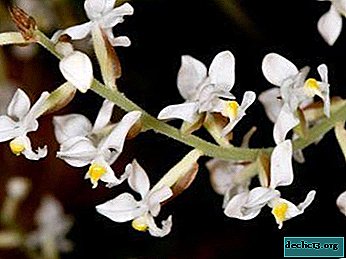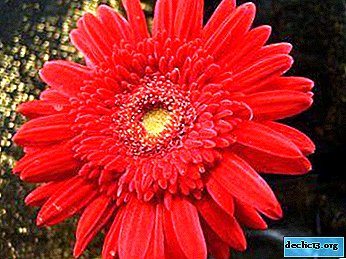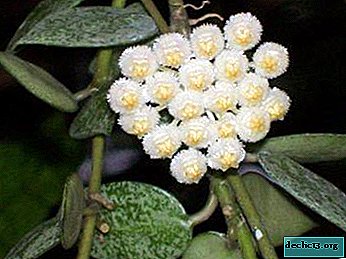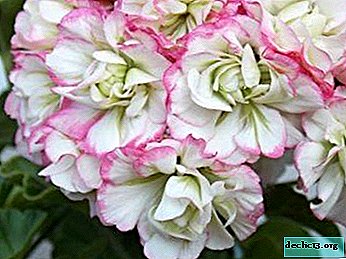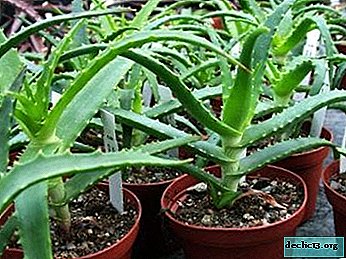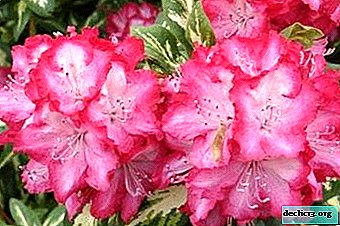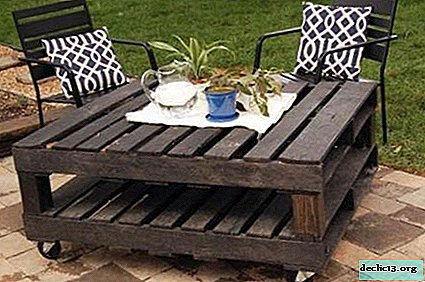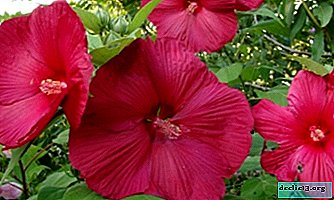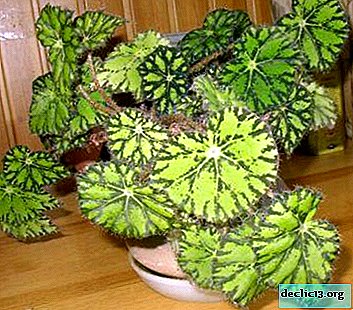Description and living conditions of the petunia Wave and its varieties Shock and Izi. Features of reproduction and care
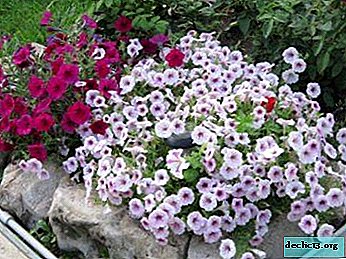
Ampelic petunia is a popular decorative culture, which is presented in a wide variety of shades and varieties. Balconies and terraces with hanging floral waterfalls of these flowers look luxurious.
One of the most beautiful and spectacular is the variety Wave. It blooms for a long time, does not require special attention in terms of care and is replete with various shades.
Next, we will tell in detail about the features of this variety, planting and reproduction. And also, consider the possible problems and diseases of the plant.
Botanical Description and History
Petunia wave is an ampel variety of petunia. Her homeland remains South America. The variety was bred not so long ago, it is characterized by intensive growth and early flowering. The growth of the bush is average, the flowering is magnificent, and the shoots are resistant to fragility. The length of the branches is 80-90 cm. The bush blooms throughout the season. The diameter of the flowers is 5-6 cm. The Wave variety is an excellent solution for vertical gardening. The plant is grown in hanging planters and balcony drawers.
Varieties of varieties and their features
Shock
This variety is characterized by early flowering and rapid growth. The height of the bush is 20 cm, and the length of the branches is 80-90 cm. The diameter of the flowers is 5-6 cm. These flowers are the smallest among all ampelous varieties of petunias.
On a note. Flowering is magnificent and long. The stems are quite strong, so they can withstand a gentle wind.The flowers form a dense hat, due to which the foliage is completely invisible. Flowers can be blue, white, pink and yellow. You can admire them throughout the season. Inflorescences are simple and terry (about other varieties with terry inflorescences and their features can be found here).


Easy
This variety was obtained by an American breeder. The plant is distinguished by its compact size and a wide palette of shades. The crown is spherical, so you can grow the culture in hanging baskets and containers.
The most popular types of this group are:
- Tango Blue Star.
- Shock Wave Deep Deep.
The length of the shoots is 2 m, and the diameter of the inflorescences is 6-7 cm. The hybrid is distinguished by abundant and long flowering.
Petunia Easy Wave:

Petunia Tango Blue Star:

Petunia Shock Wave Deep Deep:
Landing
Landing activities should be carried out according to the following scheme:
- Scatter planting material in the form of seeds on the surface of the earth and sprinkle with soil only a little.
- It is best to grow ampelous petunia in pots.
- After planting, carry out frequent and thorough spraying with water.
- Seedlings contain under cover in the form of a plastic film or glass. Clean it every day for half an hour so that condensation does not form.
- After 14 days, leaves form. This moment is suitable for fertilizing. Do this 1-2 times a week, combining with watering.
- As soon as 2-3 real leaves are formed, then you can begin to pick. Disposable cups are suitable for this, in which 1-2 plants are planted.
- In a large pot, transplant the plant in mid-May.
Soil requirements
Petunia Wave prefers loose and airy soil. You can cook it yourself, using turf and leafy soil, peat and sand. Perlite will help to add looseness to the soil mixture. You can buy a ready-made substrate in a specialized store.
Lighting and location
Petunia Wave is a photophilous culture. Grow it in a well-lit place.
Note! The effect of direct sunlight in the daytime is unacceptable.Care
Watering
The plant normally tolerates mild drought and waterlogging. Water it in the summer 2 times a day, combining with spraying. The irrigation water is suitable for irrigation. If the summer is rainy, then you have to take care of high-quality drainage, otherwise this weather will cause the development of fungal diseases. In addition, pour water only under the root. The presence of large drops on the leaves and petals is unacceptable, since this is fraught with the development of rot.
Fertilizer
 Variety Wave abundantly blooms, but you can give it maximum decorativeness provided timely fertilizer. To bring them in already on the 2nd week after planting seeds. Top dressing is carried out simultaneously with watering. Is available exemplary scheme for making nutritional formulations:
Variety Wave abundantly blooms, but you can give it maximum decorativeness provided timely fertilizer. To bring them in already on the 2nd week after planting seeds. Top dressing is carried out simultaneously with watering. Is available exemplary scheme for making nutritional formulations:
- The first week is to add humates with water.
- The second week is to add potassium sulfate with water.
- Alternate top dressing every week.
Common Diseases and Pests
Petunia wave is quite rarely affected by diseases and pests. The main reason for their development is improper care. Most often, the flower is affected:
- Gray and wet rot. It forms on the leaves in the form of a light brown spot. Over time, it grows, covering the plant with a fluffy coating. The main cause of infection is excessive humidity and low temperature (below 14 degrees).Important! Also, an excess of nitrogen can affect the development of the disease.
- Aphid. This is a dangerous pest that most often infects petunia. To remove parasites, you need to wash them off with a stream of water. In case of severe infection, treat with insecticides.
- Powdery Mildew This is a fungal disease that occurs when there is a sharp jump in air humidity and temperature. It appears in the form of a whitish coating resembling flour. To combat the disease remove all affected areas of the plant, and then carry out the treatment with sulfur.
Breeding methods
Seminal
Despite the fact that this method is simple and fast, it does not allow to obtain plants with the complete preservation of all the characteristics of the variety. Sowing seeds for seedlings in early March. With quality care of the plant, they can be planted in open ground in May. Then in June the bush will bloom profusely.
Watch a video on how to sow Wave petunia seeds:
Cuttings
This method of reproduction is often used by experienced growers. It has the following features:
- Cut the cuttings for propagation with a sharp knife at an angle.
- On the shoot there should be leaves (2-3), which are located at the top.
- Dip the cuttings in water and keep them in a warm room.
- After 7 days, roots are formed, so that you can send petunia to the ground.
This method has one disadvantage - the flowering of the plant begins not earlier than 25-35 days.
Possible problems
Growing wave petunias is a simple process. Observing simple care recommendations, it blooms beautifully and rarely gets sick. But not everything goes smoothly. There are some problems:
 You should not combine wave petunia with other varieties that differ in different strengths of growth. More powerful shoots will begin to oppress the weak, inhibiting their growth and flowering.
You should not combine wave petunia with other varieties that differ in different strengths of growth. More powerful shoots will begin to oppress the weak, inhibiting their growth and flowering.- Do not plant the plant in a pot with a different flowering period. We discussed the features of growing ampoule petunias in pots here.
- The pot must ensure the outflow of water. To do this, you will have to take care of quality drainage. Otherwise, the roots will begin to rot, and the plant itself will stop growth and flowering.
- Choosing a location for the location of the petunia, it is necessary that it be protected from wind and rain, and also carefully lit. Only then will the plant bloom long and plentifully.On a note. In the shade, the flower inhibits growth.
- Do not oversaturate the soil with accents. This is especially true for nitrogen compounds. With their regular and plentiful application, green mass will actively develop, but flowering will stop. To solve this problem is simple - adjust the dosage and timing of the introduction of nutrient compounds.
Petunia Wave is a beautiful plant that can decorate not only balconies and loggias, but also garages, verandas, cafes, offices. It’s easy to care for a flower; it is rarely affected by diseases and pests. Combining the plant with other spectacular varieties of petunias, an original and unique floral arrangement is obtained.

 You should not combine wave petunia with other varieties that differ in different strengths of growth. More powerful shoots will begin to oppress the weak, inhibiting their growth and flowering.
You should not combine wave petunia with other varieties that differ in different strengths of growth. More powerful shoots will begin to oppress the weak, inhibiting their growth and flowering.

